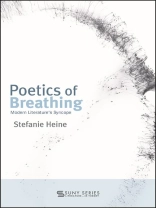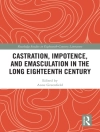A comparative study of breath and breathing as a core poetic and compositional principle in modern literature.
Breathing and its rhythms-liminal, syncopal, and usually inconspicuous-have become a core poetic compositional principle in modern literature. Examining moments when breath’s punctuations, cessations, inhalations, or exhalations operate at the limits of meaningful speech, Stefanie Heine explores how literary texts reflect their own mediality, production, and reception in alluding to and incorporating pneumatic rhythms, respiratory sound, and silent pauses. Through close readings of works by a series of pairs-Jack Kerouac and Allen Ginsberg; Robert Musil and Virginia Woolf; Samuel Beckett and Sylvia Plath; and Paul Celan and Herta Müller-Poetics of Breathing suggests that each offers a different conception of literary or poetic breath as a precondition of writing. Presenting a challenge to historical and contemporary discourses that tie breath to the transcendent and the natural, Heine traces a decoupling of breath from its traditional association with life, and asks what literature might lie beyond.
Содержание
List of Illustrations
Acknowledgments
Preface
1. Movements of Syncopnea
2. Composed on the Breath: Authentic Voice, Embodiment, Innovation (Jack Kerouac, Allen Ginsberg)
3. Generative Caesurae: Mediality, Rhythm, Affect (Robert Musil, Virginia Woolf )
4. Impossible Expiration: Reduction, Inanimate Voices, Persisting Bodies (Samuel Beckett, Sylvia Plath)
5. Breath at Point Zero: Trauma, Commemoration, Haunting (Paul Celan, Herta Müller)
6. Pneumatic Gender Dynamics, Queering Breath
Notes
Bibliography
Index
Об авторе
Stefanie Heine is Assistant Professor of Comparative Literature in the Department of Arts and Cultural Studies at the University of Copenhagen. Her previous books include Reading Breath in Literature (coauthored with Arthur Rose, Naya Tsentourou, Corinne Saunders, and Peter Garrett).












